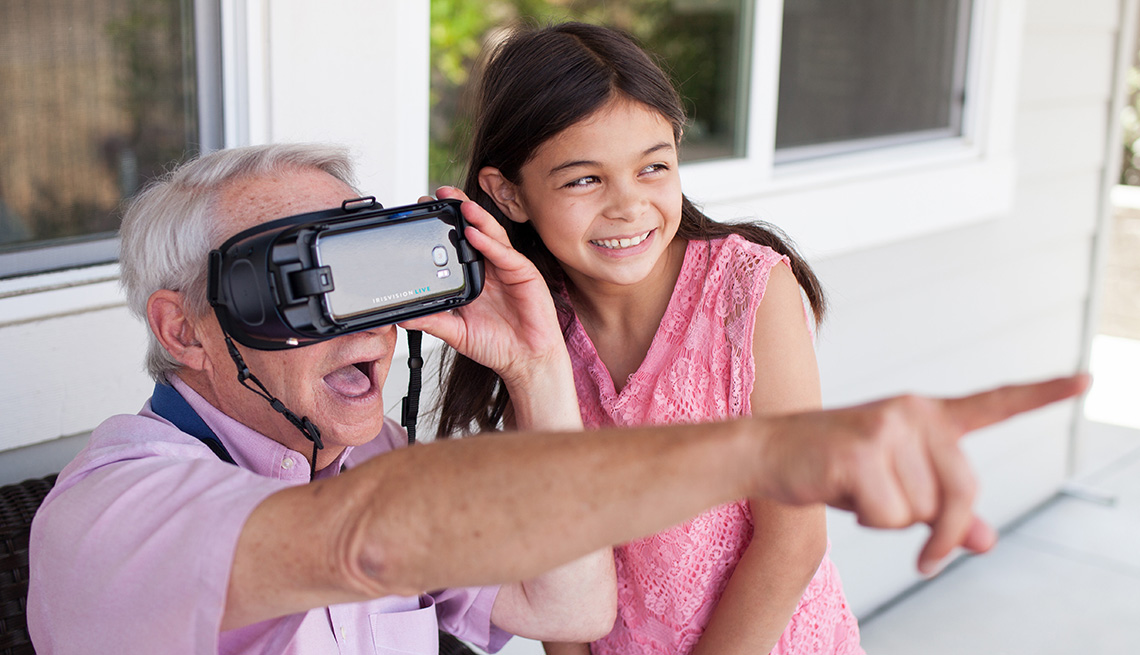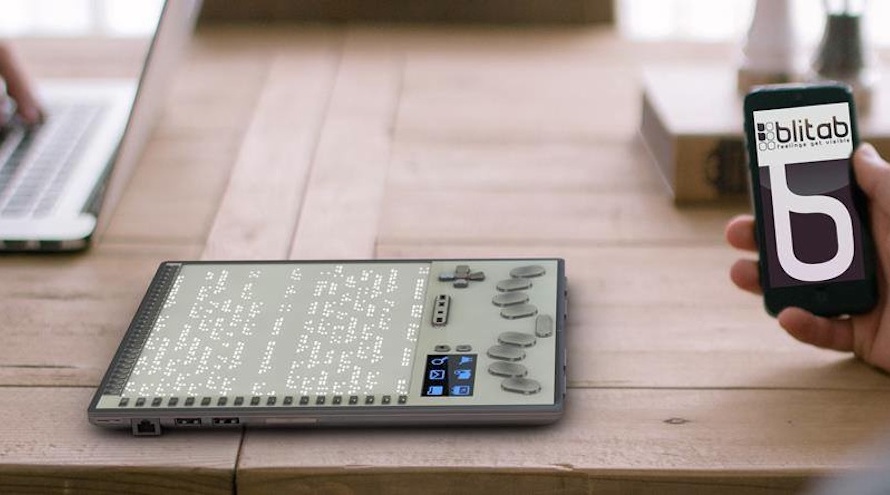An Overview to Life-Changing Assistive Innovation for the Blind and Aesthetically Damaged
The development of assistive innovation has ushered in a transformative period for individuals that are blind or visually damaged, offering devices that enhance freedom and improve day-to-day experiences. Advancements such as smart navigation tools and AI-driven applications are redefining just how customers communicate with their environments, while accessible analysis remedies and wise home innovations promise to additional elevate the quality of life.
Smart Navigating Tools
Smart navigation tools are transforming the method individuals that are aesthetically damaged or blind engage with their environment. These advanced technologies, which integrate GPS, audio comments, and haptic signals, supply customers with critical details regarding their environments, enhancing their freedom and wheelchair.
One famous example is the use of wise walking canes outfitted with sensing units that spot barriers and provide real-time feedback via resonances or audio cues. These devices allow customers to browse intricate atmospheres, such as busy roads or crowded public rooms, with boosted confidence. Additionally, wearable tools, such as clever glasses, are being created to assist in identifying faces, reviewing text, and identifying things, further enhancing the individual's spatial understanding.
Moreover, wise navigation tools are progressively including artificial knowledge to evaluate data and adapt to users' choices. This tailored technique not just enhances navigation performance but additionally fosters a sense of empowerment amongst users. As technology remains to breakthrough, the capacity for clever navigation devices to develop a more available and inclusive globe for individuals that are visually damaged or blind remains appealing, eventually improving their everyday experiences and communications.
Cutting-edge Mobile Applications
Mobile applications are emerging as powerful devices for assisting individuals who are blind or aesthetically damaged, offering a variety of functionalities that improve daily living. These applications harness progressed technology to help with day-to-day jobs, enhance availability, and advertise independence.
One group of ingenious mobile applications focuses on visual recognition. Applications like Be My Eyes attach customers with sighted volunteers through video clip telephone calls, allowing real-time assistance for tasks such as checking out labels or browsing unfamiliar atmospheres. In a similar way, applications like Seeing AI use expert system to describe surroundings, reviewed text, and identify items, supplying individuals with critical information at their fingertips.
One more considerable area is navigation and orientation. Apps such as Aira and Neighboring Traveler give audio support, helping individuals browse metropolitan rooms with simplicity. They use individualized help, enabling for a more positive expedition of the atmosphere.
Moreover, wellness and health applications cater to particular demands, such as drug monitoring and health and fitness monitoring. These applications aim to promote an alternative approach to health, making certain that users can maintain their health individually.
Wearable Assistive Tools
Wearable assistive tools stand for a considerable development in modern technology created to support people who are blind or visually damaged. These devices improve mobility and freedom by offering real-time comments concerning the surrounding atmosphere. Amongst one of the most significant wearable technologies are wise glasses geared up with cams and sensing units, which can recognize obstacles and relay vital details via sound cues.

One more innovative alternative includes wrist-worn devices that make use of ultrasonic waves to spot barriers and give navigational aid. These gadgets commonly come with customizable settings, allowing individuals to customize the notifies to their particular demands.
The combination of synthetic knowledge in wearable assistive innovation is additionally significant, as it look these up constantly improves the precision and responsiveness of these gadgets. Overall, wearable assistive devices are changing the lives of the blind and visually impaired, promoting greater autonomy and enhancing top quality of life with innovative options.
Obtainable Reviewing Solutions
Available reading remedies play a critical duty in enabling people that are visually impaired or blind to engage with message throughout various formats. These options include a variety of modern technologies and devices created to boost analysis experiences, from traditional print products to digital material.
One prominent option is Optical Personality Acknowledgment (OPTICAL CHARACTER RECOGNITION) technology, which transforms published text into electronic format, enabling individuals to listen to or read the web content utilizing screen visitors. Additionally, specialized e-readers outfitted with text-to-speech capacities supply personalized reading experiences, allowing individuals to adjust font sizes and history colors for enhanced visibility.
Another efficient approach is braille screens, which offer tactile feedback by converting electronic text right into braille. This permits people to review touch, promoting greater self-reliance and accessibility to literature. Mobile applications developed for reviewing checked records or books can empower individuals with immediate this contact form accessibility to a vast collection of materials (Braille displays and notetakers).

Smart Home Technologies
Smart home modern technologies have revolutionized the method people that are blind or visually impaired interact with their living atmospheres, enhancing both freedom and safety. These innovative services utilize automation and connectivity to create an obtainable space tailored to the requirements of individuals.
Smart audio speakers and voice-activated assistants offer hands-free control over numerous tools, enabling customers to change lighting, protection, and temperature actions with easy voice commands. This functionality lessens reliance on sighted support and fosters a feeling of autonomy. Additionally, wise lighting systems can be tailored to provide acoustic feedback or tactile hints, allowing individuals to browse their homes better.
In addition, security systems equipped with wise cameras and sensors can send real-time alerts to customers, boosting individual safety without necessitating visual verification. Automated door locks offer comfort, enabling individuals to safeguard their homes easily.
Integrating clever home modern technologies not only enhances day-to-day living however likewise encourages social interaction via connected gadgets - OCR devices for the blind. With continuous innovations in assistive technology, the future appears appealing, as even more services will certainly arise to further equip individuals who are blind or visually damaged, making certain a more independent and inclusive way of living
Conclusion
To conclude, the developments in assistive technology for the visually impaired and blind stand for a considerable jump toward enhancing self-reliance and high quality of life. Smart navigating tools, cutting-edge mobile applications, wearable devices, available analysis remedies, and clever home technologies collectively cultivate a comprehensive setting. This integration of technology not just improves movement and day-to-day living however likewise encourages individuals to engage totally with their surroundings, advertising higher autonomy and involvement in culture.
Developments such as smart navigating devices and AI-driven applications are redefining exactly how users communicate with their surroundings, while obtainable reading remedies and wise home modern technologies promise to more raise the quality of life. As innovation proceeds to advancement, the potential for smart navigating devices to create an extra inclusive and easily accessible globe for individuals that are visually damaged or blind remains appealing, ultimately reshaping their everyday experiences and communications.
Wearable assistive tools stand for a considerable innovation in technology created to sustain people who are blind or eyeglass shop aesthetically damaged. Among the most significant wearable modern technologies are wise glasses equipped with sensing units and cameras, which can identify obstacles and relay crucial information with sound hints.
Smart navigating devices, cutting-edge mobile applications, wearable gadgets, accessible reading services, and wise home modern technologies jointly cultivate an inclusive atmosphere.